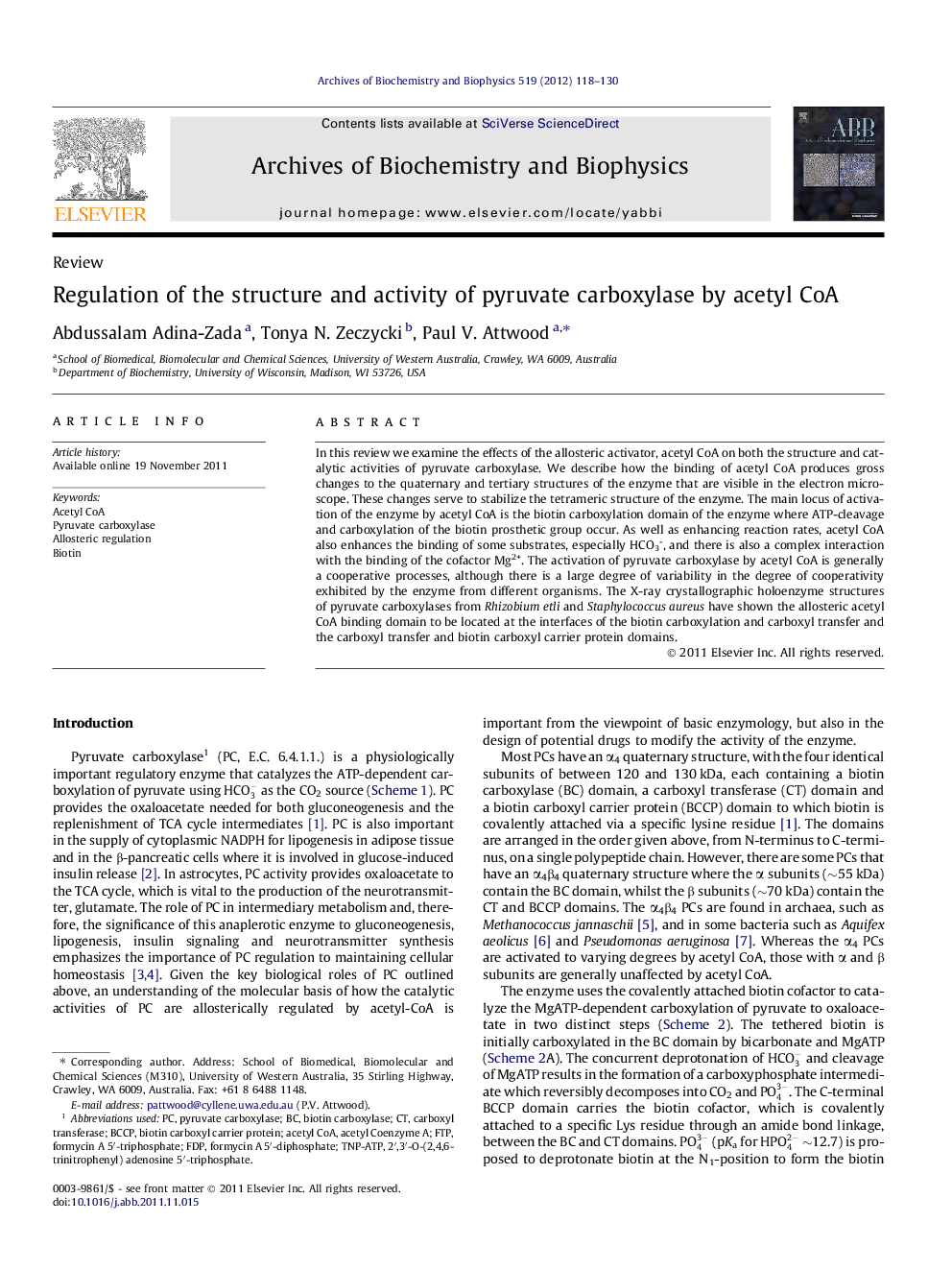| Article ID | Journal | Published Year | Pages | File Type |
|---|---|---|---|---|
| 1925604 | Archives of Biochemistry and Biophysics | 2012 | 13 Pages |
In this review we examine the effects of the allosteric activator, acetyl CoA on both the structure and catalytic activities of pyruvate carboxylase. We describe how the binding of acetyl CoA produces gross changes to the quaternary and tertiary structures of the enzyme that are visible in the electron microscope. These changes serve to stabilize the tetrameric structure of the enzyme. The main locus of activation of the enzyme by acetyl CoA is the biotin carboxylation domain of the enzyme where ATP-cleavage and carboxylation of the biotin prosthetic group occur. As well as enhancing reaction rates, acetyl CoA also enhances the binding of some substrates, especially HCO3-, and there is also a complex interaction with the binding of the cofactor Mg2+. The activation of pyruvate carboxylase by acetyl CoA is generally a cooperative processes, although there is a large degree of variability in the degree of cooperativity exhibited by the enzyme from different organisms. The X-ray crystallographic holoenzyme structures of pyruvate carboxylases from Rhizobium etli and Staphylococcus aureus have shown the allosteric acetyl CoA binding domain to be located at the interfaces of the biotin carboxylation and carboxyl transfer and the carboxyl transfer and biotin carboxyl carrier protein domains.
► Acetyl CoA is an allosteric activator of pyruvate carboxylases with α4 quaternary structures. ► The dependence of activity of the enzyme on acetyl CoA varies according to the source organism. ► The binding and activation of pyruvate carboxylase by acetyl CoA is generally cooperative. ► The locus of activation by acetyl CoA is in the cleavage of ATP and carboxylation of biotin. ► Acetyl CoA stabilises the tetrameric structure of pyruvate carboxylase.
